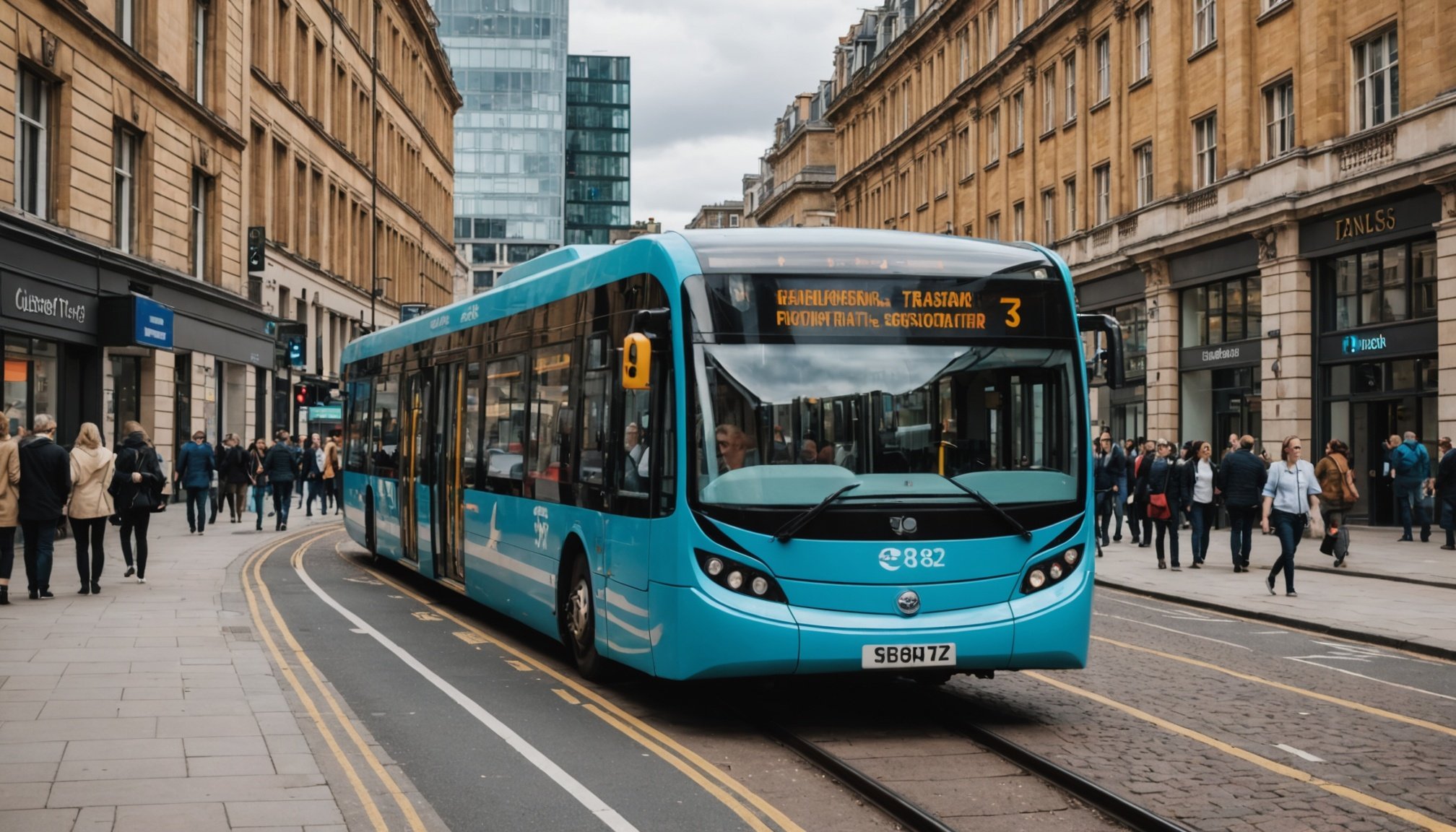Overview of AI in Public Transportation
In the realm of AI in public transportation, the UK transit systems have seen groundbreaking integration. AI technologies are progressively transforming the transportation landscape. With AI’s implementation, transit operators improve route planning and scheduling, optimising their services for vast network operations.
The benefits of AI in this sector are noticeable, from real-time traffic analysis to predictive maintenance. These advancements enhance service reliability and maximise vehicle uptime, ultimately improving user satisfaction.
In the same genre : Transforming customer service in the uk: the ultimate guide to innovative ai solutions
Current adoption trends in the UK public transit sector exhibit a noteworthy shift towards intelligent systems. Numerous cities are embracing AI for managing traffic congestion, reducing operational costs, and enhancing passenger safety. Such adoption illustrates growing trust in technology’s potential impact.
The potential impact on efficiency and user experience cannot be understated. AI-driven tools offer unprecedented benefits in reducing delays and providing more accurate arrival times. Furthermore, AI’s capability to analyse user patterns helps in creating tailored services, catering to the diverse needs of commuters.
Also to read : Transforming customer service in the uk: the ultimate guide to innovative ai solutions
With AI continuously evolving, its scope in public transit is set to expand. As UK transit systems innovate, the integration of AI is poised to deliver not just logistical improvements but also a more connected and accessible public transportation experience.
Case Studies: Successful AI Implementations in the UK
Exploring technological prowess and forward-thinking strategies, the UK is a beacon for successful AI projects. Delve into illuminating case studies showcasing AI’s transformative potential, especially in transit.
Intelligent Transport Systems (ITS) in London
London’s Intelligent Transport Systems (ITS) serve as a benchmark in urban transit innovation. These systems encompass advanced technologies like AI to enhance service frequency, positively affecting commuter satisfaction. By analysing data on ridership patterns and traffic flows, AI applications optimize bus schedules and routes, thus improving operational efficiency. The integration of these systems has led to notably smoother commutes and fewer delays.
Predictive Maintenance in Bus Fleets
Incorporating AI-driven predictive maintenance strategies, UK bus companies have reported significant improvements in service reliability. By analysing data from vehicle sensors, AI predicts maintenance needs before a failure occurs. This preemptive approach saves costs by reducing unexpected repairs and downtime, leading to a more dependable transit service. Companies like Arriva and Stagecoach are pioneers in adopting these impactful strategies.
AI-Powered Traffic Management Solutions
AI solutions in traffic management have revolutionized urban mobility. Cities have seen reduced congestion and better travel times through the use of AI to manage traffic lights and predict congestion hotspots. Collaborations between tech firms and local authorities have been essential, delivering economic benefits and enhancing the commuting experience.
Challenges of Integrating AI in Public Transit
Integrating AI in public transit presents considerable challenges, particularly when budget constraints limit possibilities. Public transit systems often operate on tight budgets, making it difficult to allocate resources for advanced technologies. Implementing AI requires significant funding not only for the software and tools themselves but also for the ongoing maintenance and updates.
Another critical aspect is addressing data privacy and ethical considerations. Public transit systems handle vast amounts of personal data, raising concerns about data protection and privacy rights. Ethical considerations come into play, especially around surveillance and the fair use of data. Ensuring compliance with existing data protection laws is essential.
Technical challenges are substantial as well. System compatibility is often a barrier to adoption, with existing infrastructures not always able to seamlessly integrate new AI technologies. Additionally, training staff to effectively use these new systems can be a daunting task. The workforce needs to be adequately trained to manage and interact with AI systems, which can be time-consuming and costly.
Efforts to overcome these barriers to adoption in public transit require strategic planning, comprehensive training programmes, and stringent adherence to privacy laws to cultivate trust and acceptance among the public.
Potential Benefits of AI in Enhancing Transportation Systems
Artificial Intelligence (AI) has the potential to revolutionize transportation systems, offering numerous benefits. By leveraging real-time data analytics, AI can enhance operational efficiency significantly. The utilization of AI technologies allows for continuous assessment and optimization of services, leading to reduced costs and improved resource allocation. Such advancements translate into improved efficiency across transit services.
Moreover, AI can transform the user experience into something more enjoyable and personalized. Through the analysis of passenger data, transit systems can predict user preferences, offering personalized service recommendations and dynamic routing options. This customization not only optimizes routes but also heightens rider satisfaction.
AI also contributes to service reliability by enabling predictive maintenance. This proactive approach minimizes downtime, ensuring that transit vehicles are in top condition, contributing further to user satisfaction by reducing wait times.
Furthermore, the implementation of AI in transit systems can facilitate increased service reliability, bolstering public confidence and further encouraging the use of public transportation.
In summary, AI offers a multitude of benefits in transit improvement by not only enhancing operational efficiency and user satisfaction but also guaranteeing service reliability. These innovations are set to profoundly impact future transportation dynamics.
Future Trends in AI for Public Transit
Autonomous Public Transport Vehicles
Autonomous public transport represents a significant step towards modernising urban mobility. Current developments in the UK showcase buses and shuttles equipped with cutting-edge AI for navigating urban landscapes. These vehicles promise enhanced public safety by minimising human error, potentially reducing the number of accidents. Efficiency gains are also crucial, as AI systems can optimise routes and schedules. However, public acceptance remains a key challenge. Regulatory frameworks also need updating to align with these technological advances. Balancing safety, efficiency, and regulation will be critical in achieving broader acceptance and success for such innovations.
Integration of AI with Sustainability Initiatives
AI plays a pivotal role in making transportation greener. By enabling predictive maintenance of vehicles, AI helps reduce emissions over time. Encouraging collaborations across mobility sectors allows various stakeholders to innovate together, each contributing to a more sustainable future. For example, AI-driven insights can inform infrastructure design, potentially making it more environmentally friendly and cost-effective.
Data-Driven Decision Making in Transit Planning
Integrating AI into transit planning allows for informed decision-making. AI utilises massive datasets to identify trends, thereby helping planners devise effective strategic plans. The importance of comprehensive data cannot be overstated, as it forms the backbone of successful policy-making. Real-world examples demonstrate how data-driven insights can lead to smoother, more efficient transit systems, potentially revolutionising public transport services.











